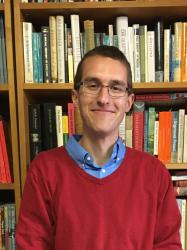Alaska’s university system is currently facing $130 million in funding cuts to an annual budget of $900 million, which included $327 million in state funding last year. These potential cuts have sparked criticism from researchers at other universities, University of Alaska President James Johnsen, Alaskan state legislators, and citizens.
If the cuts stemmed from a budgetary crisis, perhaps the response would have been gentler. However, Alaska’s Governor Mike Dunleavy is seeking to give the money back to Alaskans each year, providing an annual dividend of $3,000 to each resident.
This approach has led to arguments that Dunleavy is needlessly stripping funding from key services, including “public broadcasting, Medicaid, homeless shelters, K–12, pre-K, [and] university education,” based on his belief “that individuals make better decisions about their money than the government does.”
Perhaps Johnsen, a leading critic of Dunleavy, has not thought about what he might do with his $3,000 dividend. If he values public broadcasting, Medicaid, homeless shelters, and education, he could contribute his dollars to those causes accordingly.
Of course, Johnsen, or any other Alaskan resident, might prefer a different mix of those services. In Johnsen’s case, university education might be preferred over pre-K education. However, calling individual Alaskans to send their money directly to those causes they value could lead to more emotional connections to those causes and a greater investment of non-financial resources, such as time and energy. Possibly Alaskans who were told that the fate of their homeless shelters depended on their own contributions, rather than that of a distant bureaucracy, would not only give the same or more money than the Governor plans to cut, but would also volunteer to serve more at those shelters.
Another potential outcome of Governor Dunleavy’s return of wealth to those who earned it could be a shift toward institutions and programs that fit Alaskans better. For example, the University of Alaska might offer more online courses as a less expensive alternative to traditional courses. Recent research indicates that online classes may be a better fit for students who also work, and many Alaskan college students, whose median age is 25, do just that.
One reason James Johnsen could believe that returning money to Alaskan residents is a harmful idea is that he might simply see his fellow Alaskans as poor decision makers. Universities and public broadcasting are things that Johnsen himself enjoys and would support, but the majority of Alaskans are too foolish to understand and value those goods.
While this is a very straightforward argument, it’s not a very democratic one. If many Alaskans don’t believe they benefit from the University of Alaska under current arrangements, some change on the university’s part might be required to serve its students and their families better.
An improved vision of Alaskan citizens might benefit Johnsen and others. Each individual is a creative, rational person with an inherent dignity, not a number to be simply administered or instructed by an elite. Moreover, every person is inclined to community and action, developing social institutions for their own benefit rather than receiving them fully designed by an elite minority of Alaska’s few thinkers.
As things stand, Alaska compensates its public sector employees, including the education sector, more than any other American state. By contrast, private sector compensation ranks 31st. Over the past two decades, public sector total compensation has increased 88%, while private sector total compensation has only grown 26%. In these circumstances, Governor Dunleavy may be correct in believing that Alaskans will use their own funds more responsibly than the bureaucrats in the state government.
It is important to remember that the University of Alaska contributes significantly to Alaska’s economy. The revenue generated by universities and the qualified, competent graduates for Alaskan businesses are certainly beneficial. However, this only makes it more likely that Alaskan citizens and entrepreneurs would be willing to support the University of Alaska independent of government coercion through taxation.
Ultimately, the attacks on the Alaskan Governor’s spending cuts appear to be rooted in a lack of confidence that every Alaskan citizen is a competent, engaged, thoughtful person. Thus, the state government must take their resources and use them for wise purposes that Alaskan residents would ignore.
This approach reverses the principles of subsidiarity and the priority of a moral culture required for flourishing. Community and social order are built from the ground up, through the family and many intermediary institutions, not from the top down through government alone.
Hopefully, Alaskan citizens will use their newfound funds wisely. Sin is a reality, so some people may choose to use the money for harmful purposes. Still, freeing funds for individual imagination may ignite a round of wealth creation and healthy social action through economic liberty, a brighter vision than the bureaucratic elitism opposing Governor Dunleavy.
Photo Credit: firedoglakedotcom CC BY-SA 2.0

